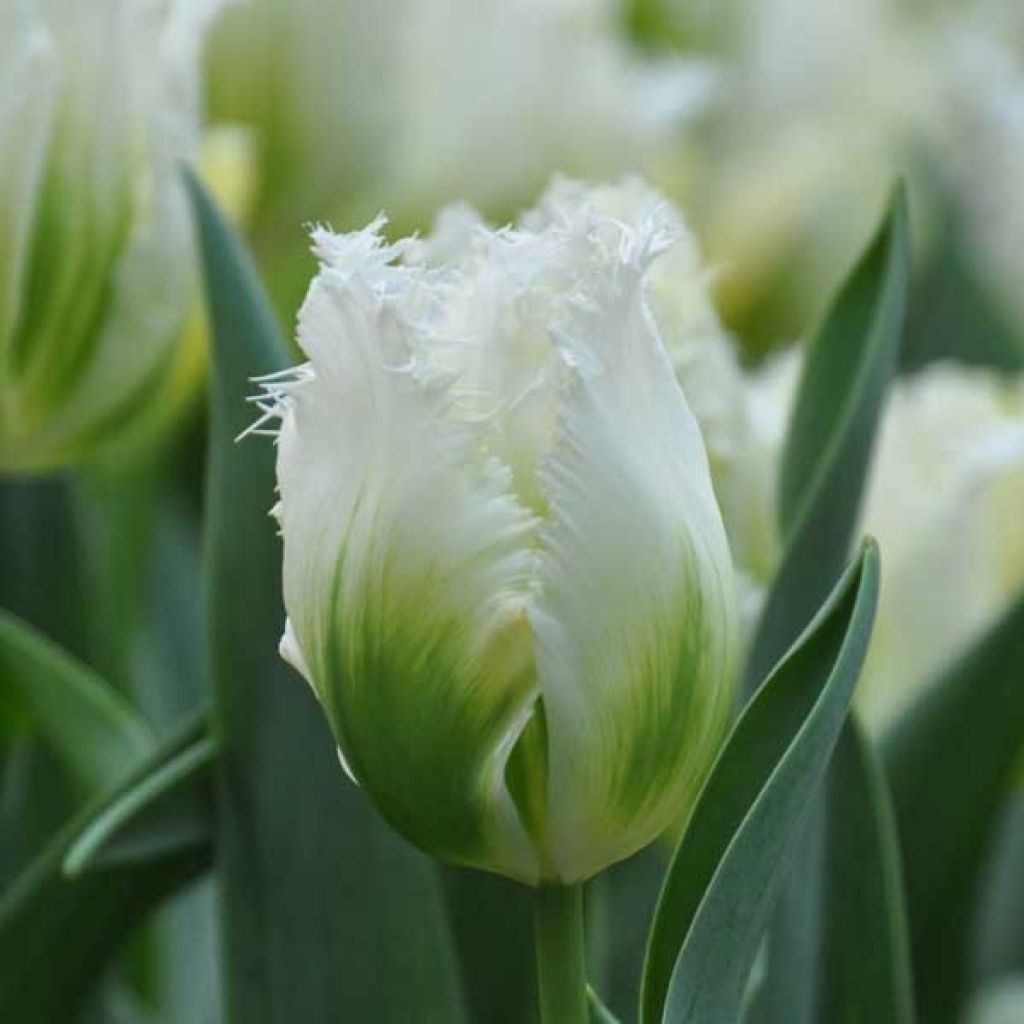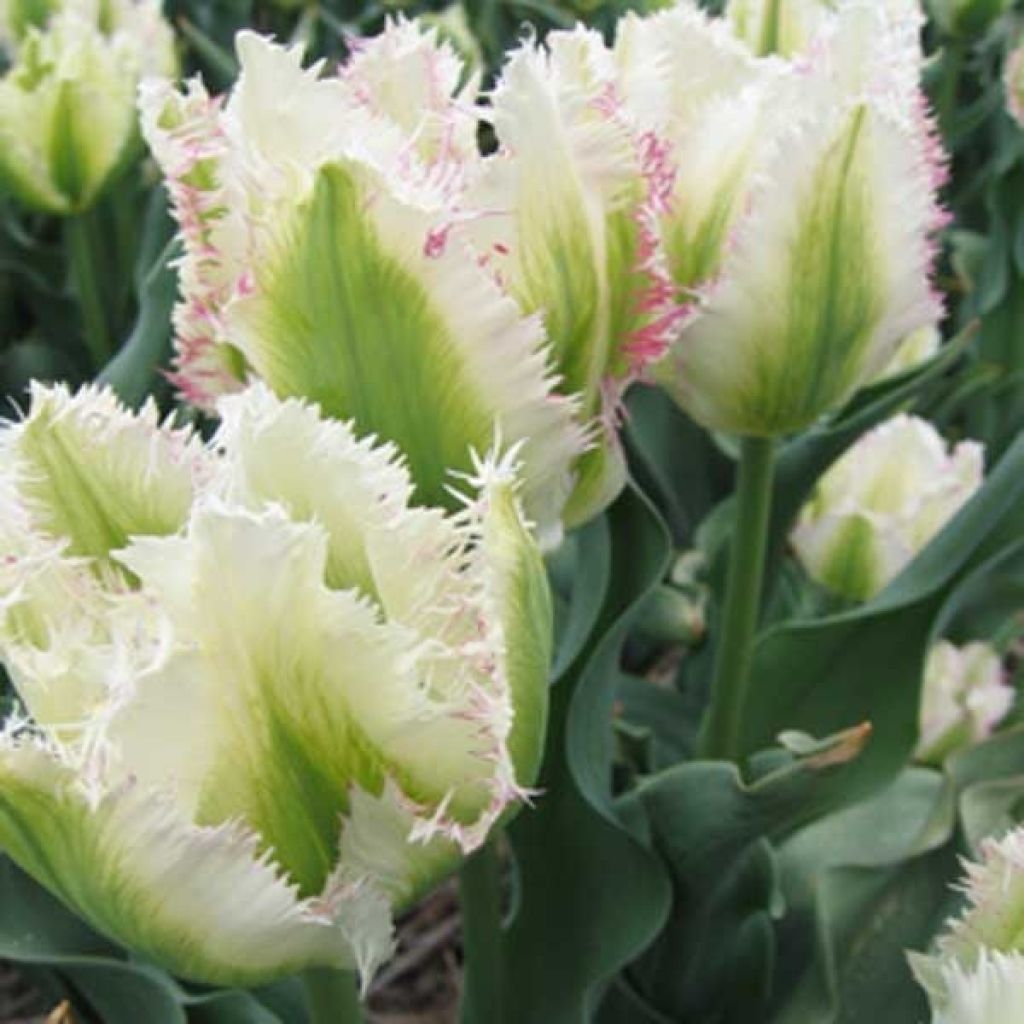

Tulipe Dentelée Snowvalley


Tulipe Dentelée Snowvalley
Tulipa crispa 'Snow Valley'
Tulipa crispa Snow Valley
beautiful dentate tulip" Analyse de la traduction : La traduction du texte est correcte sur le plan linguistique. Cependant, il convient de noter que l'expression "dentelée" est traduite par "dentate", qui est un terme utilisé en botanique pour décrire les bords d'une feuille ou d'une plante qui sont dentés ou dentelés. Cette traduction est donc appropriée dans le contexte de la botanique.
Marie Noelle B., 18/04/2017
This plant carries a 6 months recovery warranty
More information
We guarantee the quality of our plants for a full growing cycle, and will replace at our expense any plant that fails to recover under normal climatic and planting conditions.
From €5.90 for pickup delivery and €6.90 for home delivery
Express home delivery from €8.90.

Does this plant fit my garden?
Set up your Plantfit profile →
Description
The 'Snow Valley' Dentate Tulip surprises and captivates with its large fringed flowers that are a true masterpiece of delicacy and fantasy, both in the garden and in a vase: emerging from a green bud, they unfold to reveal a white dress with a wide green flame at the centre of each petal. Over the hours and days, the lace that adorns these petals is adorned with scattered touches, first pink and then red when ripe. It blooms in late April or early May, depending on the climate, on weather-resistant stems. Its color can be easily paired with all kinds of flowers.
The 'Snow Valley' Dentate Tulip belongs to the lily family. Horticulturally originated and introduced in 2010, it is classified in the 'Crispa' group, whose main characteristic is finely toothed petal tips. This tulip, with a sturdy stem, will reach a height of 45-50cm (18-20in) when in bloom. Flowering takes place in April-May, a bit later than other tulips. The flowers are large, simple, with a slightly open cup, in a mix of snowy white and fresh green brushed with ochre, giving a sense of great freshness. The fringed edges of this astonishing tulip are colored in soft pink and then red. The flowers last a long time and extend the tulip season until May.
In the world of flowers, there are few plants that can rival dentate tulips, both original and elegant, but also resistant to heat and bad weather. Ideal for borders with all kinds of plants and colours, the 'Snow Valley' Tulip will also create bright spots in perennial flower beds, alongside biennial plants that will fill the space after flowering. You can choose, for example, wallflowers, forget-me-nots, or dame's rocket for this purpose. Very dark Heucheras, such as 'Blackout' or 'Obsidian' cultivars, enhance all pastel colours, just like blue perennial geraniums ('Rozanne', 'Johnson's Blue', 'Orion'). By choosing dentate tulips, you will also add a unique touch to your bouquets.
Report an error about the product description
Plant habit
Flowering
Foliage
Botanical data
Tulipa
crispa
Snow Valley
Liliaceae
Cultivar or hybrid
Planting and care
Preferably place the dentate tulip 'Snow Valley' in a sunny spot from September to December for a beautiful spring flowering. You can also place it in a partially shaded location. Plant the bulbs as soon as possible in a light, fertile, and well-drained soil that has been deeply loosened to a depth of 15cm (6in) (bulbs should be covered with soil to a depth twice their height). Space the bulbs 10cm (4in) apart, making sure they do not touch each other to create a mass effect for a more decorative appearance. Trim the flower stems after flowering. Allow the leaves to completely dry before cutting them.
Planting period
Intended location
Care
-
, onOrder confirmed
Reply from on Promesse de fleurs
Haven't found what you were looking for?
Hardiness is the lowest winter temperature a plant can endure without suffering serious damage or even dying. However, hardiness is affected by location (a sheltered area, such as a patio), protection (winter cover) and soil type (hardiness is improved by well-drained soil).

Photo Sharing Terms & Conditions
In order to encourage gardeners to interact and share their experiences, Promesse de fleurs offers various media enabling content to be uploaded onto its Site - in particular via the ‘Photo sharing’ module.
The User agrees to refrain from:
- Posting any content that is illegal, prejudicial, insulting, racist, inciteful to hatred, revisionist, contrary to public decency, that infringes on privacy or on the privacy rights of third parties, in particular the publicity rights of persons and goods, intellectual property rights, or the right to privacy.
- Submitting content on behalf of a third party;
- Impersonate the identity of a third party and/or publish any personal information about a third party;
In general, the User undertakes to refrain from any unethical behaviour.
All Content (in particular text, comments, files, images, photos, videos, creative works, etc.), which may be subject to property or intellectual property rights, image or other private rights, shall remain the property of the User, subject to the limited rights granted by the terms of the licence granted by Promesse de fleurs as stated below. Users are at liberty to publish or not to publish such Content on the Site, notably via the ‘Photo Sharing’ facility, and accept that this Content shall be made public and freely accessible, notably on the Internet.
Users further acknowledge, undertake to have ,and guarantee that they hold all necessary rights and permissions to publish such material on the Site, in particular with regard to the legislation in force pertaining to any privacy, property, intellectual property, image, or contractual rights, or rights of any other nature. By publishing such Content on the Site, Users acknowledge accepting full liability as publishers of the Content within the meaning of the law, and grant Promesse de fleurs, free of charge, an inclusive, worldwide licence for the said Content for the entire duration of its publication, including all reproduction, representation, up/downloading, displaying, performing, transmission, and storage rights.
Users also grant permission for their name to be linked to the Content and accept that this link may not always be made available.
By engaging in posting material, Users consent to their Content becoming automatically accessible on the Internet, in particular on other sites and/or blogs and/or web pages of the Promesse de fleurs site, including in particular social pages and the Promesse de fleurs catalogue.
Users may secure the removal of entrusted content free of charge by issuing a simple request via our contact form.
The flowering period indicated on our website applies to countries and regions located in USDA zone 8 (France, the United Kingdom, Ireland, the Netherlands, etc.)
It will vary according to where you live:
- In zones 9 to 10 (Italy, Spain, Greece, etc.), flowering will occur about 2 to 4 weeks earlier.
- In zones 6 to 7 (Germany, Poland, Slovenia, and lower mountainous regions), flowering will be delayed by 2 to 3 weeks.
- In zone 5 (Central Europe, Scandinavia), blooming will be delayed by 3 to 5 weeks.
In temperate climates, pruning of spring-flowering shrubs (forsythia, spireas, etc.) should be done just after flowering.
Pruning of summer-flowering shrubs (Indian Lilac, Perovskia, etc.) can be done in winter or spring.
In cold regions as well as with frost-sensitive plants, avoid pruning too early when severe frosts may still occur.
The planting period indicated on our website applies to countries and regions located in USDA zone 8 (France, United Kingdom, Ireland, Netherlands).
It will vary according to where you live:
- In Mediterranean zones (Marseille, Madrid, Milan, etc.), autumn and winter are the best planting periods.
- In continental zones (Strasbourg, Munich, Vienna, etc.), delay planting by 2 to 3 weeks in spring and bring it forward by 2 to 4 weeks in autumn.
- In mountainous regions (the Alps, Pyrenees, Carpathians, etc.), it is best to plant in late spring (May-June) or late summer (August-September).
The harvesting period indicated on our website applies to countries and regions in USDA zone 8 (France, England, Ireland, the Netherlands).
In colder areas (Scandinavia, Poland, Austria...) fruit and vegetable harvests are likely to be delayed by 3-4 weeks.
In warmer areas (Italy, Spain, Greece, etc.), harvesting will probably take place earlier, depending on weather conditions.
The sowing periods indicated on our website apply to countries and regions within USDA Zone 8 (France, UK, Ireland, Netherlands).
In colder areas (Scandinavia, Poland, Austria...), delay any outdoor sowing by 3-4 weeks, or sow under glass.
In warmer climes (Italy, Spain, Greece, etc.), bring outdoor sowing forward by a few weeks.


































